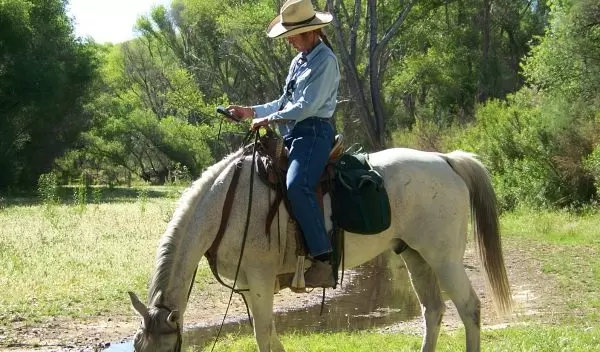
World Water Day: Citizen scientists provide valuable information on intermittent rivers
On World Water Day and throughout the year, citizen scientists are providing valuable data on intermittently dry rivers in the Southwest United States.
Trained citizen scientists are mapping three such rivers in Arizona: San Pedro River, Cienega Creek and Agua Fria River. The information is allowing researchers to determine how best to manage water resources in a changing climate.
The findings are reported today in the journal Freshwater Science; the research is funded by the National Science Foundation's directorates for Biological Sciences and Geosciences.
"It's difficult to get good quality data about how much water is in intermittent rivers," said lead scientist Daniel Allen of the University of Oklahoma. "Most of our infrastructure for measuring river flows in the U.S. is geared to monitoring water levels in rivers that always flow."
Citizen science groups, Allen said, provide valuable contributions to river science. "The data they obtain wouldn't otherwise be available. We wouldn't be able to answer basic questions like how these rivers have changed over time, and what the changes might mean for fish and other species that live there."
In the study, groups of citizen scientists measured the three waterways section by section, from where the rivers begin to where they end. The data show drying patterns and how they vary over time, allowing scientists to better understand factors such as temperature, precipitation, stream flow levels and drought.
Data from these surveys are being used to generate maps showing long-term trends. Two rivers, Cienega Creek and Agua Fria River, showed significant water level declines. The San Pedro is the only river of the three in which water levels did not decline, possibly a result of a groundwater management plan there, said Allen.
"Changes in drying patterns in intermittent rivers have strong implications for fish health and bird migration," he said, "including decreasing connectivity for native fish who need long stretches of unbroken river to reproduce."
Rivers in this region are also important for the millions of birds that migrate to and from South America, stopping along the way in the Southwest. The birds rest on cottonwood and willow trees found alongside rivers where water is flowing.
The U.S. Southwest has experienced extensive droughts over the past several decades, and river drying may continue as a result of climate change, Allen said.
Citizen science programs to map wet and dry sections of rivers and streams could be expanded, he said. "New technologies, such as smartphone applications, are being developed to improve these efforts. These projects could be expanded across the U.S. to study the variables impacting intermittent rivers in different climates with changing water use."
